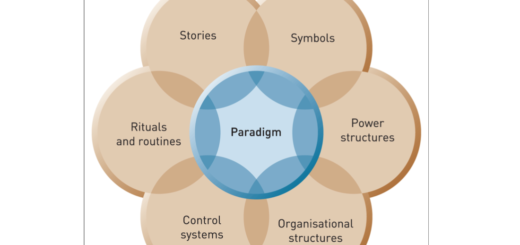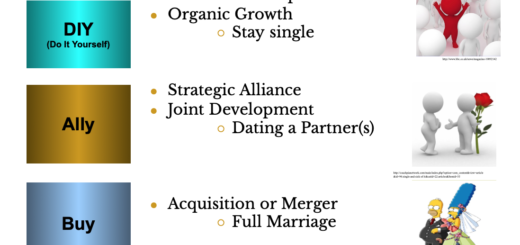The Competing Values Framework (CVF)
The Competing Values Framework (CVF) is a management model that provides a comprehensive framework for understanding and managing organizational culture. It was developed by Robert E. Quinn and Kim S. Cameron at the University of Michigan in the early 1980s.
The CVF identifies four different cultural orientations that organizations can exhibit:
- Clan culture,
- Adhocracy culture,
- Market culture, and
- Hierarchy culture.
Each of these cultures has a distinct set of values, practices, and behaviors that reflect its orientation. Organizations can exhibit one dominant culture, or a blend of multiple cultures, depending on their goals, values, and environment.
The CVF provides a tool for organizations to assess and understand their own cultural orientation and to make changes to their culture if desired. The framework can be used to identify areas of strength and weakness, develop strategies for improvement, and implement cultural change programs.
Overall, the CVF provides a useful tool for organizations to understand their culture and to make changes to it in order to improve performance and competitiveness.
Clan Culture:
Clan culture is characterized by strong values of trust, cooperation, and teamwork. It has a family-like atmosphere where people work together like a tight-knit group, with a focus on the well-being of the group as a whole and its members.
In a clan culture, decisions are often made through consensus, and there is a strong emphasis on employee involvement and empowerment. Communication is open and informal, and there is a shared sense of ownership and responsibility among employees. Leaders in a clan culture are seen as mentors and coaches, rather than bosses.
This type of culture emphasizes relationships, teamwork, and a strong sense of community.
Organizations with a strong clan culture are often supportive and flexible, and they value personal relationships and a strong sense of community. They may also prioritize employee satisfaction and well-being over strict adherence to rules and procedures.
Clan cultures are often found in organizations that are small and growing, and in those that are undergoing significant change. They can be effective in promoting employee engagement and loyalty, but may struggle with implementing formal processes and structure.
Adhocracy Culture:
Adhocracy cultures are characterized by creativity, innovation, and a focus on risk-taking and experimentation. They value flexibility, adaptability, and the ability to respond quickly to change.
In an adhocracy culture, decision-making is decentralized and there is a strong emphasis on individual initiative and creativity. Leaders in an adhocracy culture are visionary and entrepreneurial, encouraging their employees to take risks and try new things. There is a high degree of autonomy and freedom in an adhocracy culture, with a focus on encouraging innovation and new ideas.
This type of culture values creativity, innovation, and risk-taking.
Organizations with a strong adhocracy culture are often innovative and agile, and they thrive in fast-paced, rapidly changing environments. They may struggle with implementing structure and discipline, and they may have difficulty balancing the desire for innovation with the need for stability and consistency.
Adhocracy cultures are often found in creative industries, start-ups, and technology companies, where innovation and creativity are valued above all else. They can be effective in promoting innovation and creativity but may struggle with maintaining stability and long-term growth.
Market Culture:
Market cultures are characterized by a strong focus on competition, results, and achievement. They value efficiency, performance, and the ability to achieve results quickly and effectively.
In a market culture, decision-making is often centralized and hierarchical, with a clear chain of command. Leaders in a market culture are results-oriented and competitive, and they place a high value on achieving goals and meeting targets. There is a focus on competitiveness, performance, and achieving results, and employees are often evaluated on their ability to deliver results.
This type of culture prioritizes competition, results, and success.
Organizations with a strong market culture are often focused on achieving success and achieving results quickly. They are often highly competitive and results-oriented, and they place a high value on performance and efficiency.
Market cultures are often found in industries that are highly competitive, such as finance, sales, and marketing. They can be effective in promoting high levels of performance and efficiency but may struggle with promoting collaboration and teamwork.
Hierarchy Culture:
Hierarchy cultures are characterized by a strong emphasis on structure, order, and control. They value stability, predictability, and clear lines of authority.
In a hierarchy culture, decision-making is centralized and there is a clear chain of command. Leaders in a hierarchy culture are authoritative and control-oriented, and they place a high value on maintaining stability and order. There is a focus on following rules and procedures, and employees are often evaluated on their ability to adhere to established procedures and protocols.
This type of culture emphasizes stability, order, and control.
Organizations with a strong hierarchy culture are often highly structured and controlled, with clear lines of authority and responsibility. They are often well-suited to industries that require a high degree of stability and predictability, such as government and military organizations.
Hierarchy cultures can be effective in promoting stability, predictability, and control, but they may struggle with promoting innovation and creativity. They may also have difficulty adapting to change and may be resistant to new ideas and approaches.
According to the CVF, organizations can have a dominant culture, but they also typically have elements of the other three dimensions present to some degree. Understanding and assessing the culture of an organization can help leaders make informed decisions about strategy, structure, and behavior. The CVF is widely used by organizations and consultants to diagnose and address culture-related challenges and opportunities.



